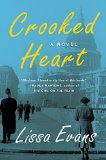Summary | Excerpt | Reading Guide | Reviews | Beyond the book | Read-Alikes | Genres & Themes | Author Bio

An Exploded Diagram
by Mal PeetMal Peet is one of those authors whose work defies categorization. He tends to write novels in which the protagonists are older (as in Exposed, a retelling of Shakespeare's Othello, set in the world of professional soccer) or in which the subjects and themes are mature (as in Tamar, a complex historical novel about the World War II resistance movement). Although his books are marketed as young adult novels, they would certainly appeal to adults as well.
Peet's newest work is no exception. The only inelegant aspect of Life: An Exploded Diagram is its title; elsewhere, Peet showcases the kind of skillful plotting and fearless exploration that have earned him a terrific reputation - and no shortage of awards.
Clem Ackroyd's arrival in the world in 1945 is marked by an explosion, as his mother Ruth - out in the garden to appease a late-pregnancy rhubarb craving - narrowly avoids being hit by the last suicidal German bomber of World War II and, consequently, goes into early labor. Clem, who is raised through toddlerhood by his ineffectual mother and bitter grandmother while his soldier father, George, is away, never quite trusts his father - even after his return from war.
Although in humble Norfolk, England, "Getting above yourself [is] a heinous and peculiar sin," George has certain ambitions for himself and his family - moving them out of the squalid, cramped Victorian cottage where Clem was born and into a modern estate house with indoor plumbing. He also accepts a job repairing machinery for Gerard Mortimer, the wealthiest landowner in the district.
Meanwhile, teenaged Clem has his own ambitions, enduring private school on scholarship and setting his sights on art school in the future. But when he meets beautiful Frankie Mortimer, the daughter of his father's employer, he discovers that only one ambition matters: making her his.
The year is 1962 however, and any desperation on Clem's part pales in comparison to the urgency of world events. U.S. president John F. Kennedy and Soviet premier Nikita Khrushchev are locked in a battle of wills - backed with enough firepower to destroy the planet - over an island country in the Caribbean. The whole world waits to see what the next day will bring - if it even comes at all.
Although anyone who's taken U.S. history knows the ultimate outcome of the Cuban Missile Crisis, Peet nevertheless manages to make the standoff between the Americans and the Soviets suspenseful in the way he alternates between presenting monumental events with depicting extremely intimate ones. The novel effectively illustrates those tense October days in 1962, even going so far as to include whole transcriptions of conversations in Kennedy's war room. But it also probes into the philosophies and personalities behind the headlines, from Kennedy, whom Peet characterizes as "a wreck of a man," to Khrushchev, whom he describes as "hard as a drill bit and as cunning as a lavatory rat."
Beyond genuinely sophisticated discussions of military strategy, Peet portrays the effects of the crisis on everyday people, namely Clem, who uses his fear of nuclear annihilation (and Andrew Marvell's poem "To His Coy Mistress") to finally woo Frankie. And they - like the scared world around them - are never the same again.
Peet's novel is full of small, wonderful, often funny details. Ruth's rhubarb craving; the "exquisitely carved wooden camel" with a brass-hinged hump that George brings back from Egypt that later becomes the ideal place for Clem to store his dope in the late '60s. Mostly though, the affecting details have to do with Clem and Frankie's awkward fumbling toward one another. "It's one of life's countless little cruelties," writes the narrator, who is Clem in later life, "that you never forget your first time." He remembers a young Frankie ruminating, "I expect it's something one gets better at with practice. Like the violin. Or anything, really." Mal Peet manages to convince readers, just as Clem and Frankie are convinced, that the force of young love is every bit as powerful as the forces that can destroy - or preserve - the world.
So is Peet's novel for adults or for teens? In the end it doesn't really matter. This novel - about the patterns of war and peace, about the forces that propel humans to wage war or to pursue reconciliation, about the impulse to create as well as destroy - will speak, like any good story, to perceptive, thoughtful readers, whatever their age.
![]() This review was originally published in The BookBrowse Review in November 2011, and has been updated for the
February 2013 edition.
Click here to go to this issue.
This review was originally published in The BookBrowse Review in November 2011, and has been updated for the
February 2013 edition.
Click here to go to this issue.

If you liked Life, try these:

by David Almond
Published 2016
In a raw and beautifully crafted bildungsroman, David Almond reveals the rich inner world of a boy teetering on the edge of manhood.

by Lissa Evans
Published 2016
Paper Moon meets the Blitz in this original black comedy, set in World War II England, chronicling an unlikely alliance between a small time con artist and a young orphan evacuee.
Most of us who turn to any subject we love remember some morning or evening hour when...
Click Here to find out who said this, as well as discovering other famous literary quotes!
Your guide toexceptional books
BookBrowse seeks out and recommends the best in contemporary fiction and nonfiction—books that not only engage and entertain but also deepen our understanding of ourselves and the world around us.